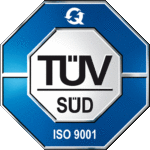The Performance Level (PL) is the assessment of the performance level of safety function under certain known conditions.
The safety function is a function of the machine or a device that is intended to protect a part of it and which, if it fails, can cause an immediate increase in risk.
It specifically refers to a signal transmitted and managed by a PLC (preferably dedicated) to manage safety functions. It is necessary to take into account these functions in order to pursue the objective of eliminating/reducing as much as possible the risk of potentially harmful situations for the operator.
Through the Performance Level, the safety level of a component from an electrical/electronic point of view is expressed through five Performance Levels, identified with letters in ascending order from A to E as the level of risk increases: a PL “e” refers to a High safety level, a PL “c” to a Medium-high safety level, a PL “a” to a significantly poor safety level.
IMPORTANT
Each level refers to an average probability of dangerous failure per hour, which means that a component with a “a” PL level has a very high chance of a hazardous event occurring.
OUR METHOD
Among the various parameters considered for the PL calculation are:
- MTTFD (Mean Time To Dangerous Failure)of a component, is the average time for a dangerous malfunction to occur
- DC (Diagnostic Coverage), is the Diagnostic Coverage resulting from the ratio between the recorded rate of dangerous failures and the total rate of dangerous failures
- CCF (Common Cause Failure), are Common Cause Failures, i.e., failures that occur on different components but caused by a single event.
However, the manufacturer needs not only to calculate the PL of a safety function but also the PLr (Performance Level Required), i.e., the calculation of the required Performance Level for that specific safety function: it is identified during the Risk Assessment through a heuristic method based on knowledge and experience in the field of Risk Assessment for machinery.
The 3 parameters considered for the calculation of PLr are:
- S – Severity of injury
- F – Frequency/duration of exposure to the hazard
- P – Possibility of avoiding the hazard or reducing the harm.
The protection system implemented by the manufacturer to ensure safe use of the machine for the operator must have a PL equal to or better than the calculated PLr for the safety function under consideration to attest its adequacy regarding each risk considered.
As a rule, in jargon, it is simplified by saying that the Performance Level of a machine is represented by the average of the Performance Levels of the individual functions, but this is not entirely correct:
in fact, the PL of a machine is guaranteed not only by the individual components but also by the entire architecture underneath it, which connects the various components.
IMPORTANT
When we carry out the Risk Assessment for you, we also handle the calculation of the Performance Level since it is part of the documents related to the machine that are archived within its Technical File.
THE STANDARD UNI EN ISO 13849-1:2016
We know how fundamental it is for a manufacturer to comply with the required indications to design and manufacture machines that are considered “safe”, and therefore compliant with the Essential Health and Safety Requirements required by European legislation.
Once a proper Risk Assessment has been carried out as per UNI EN ISO 12100:2010 classifying hazards, risks, and severity of damages in which the operator may incur (with the aim of eliminating them and, where not possible, minimising them), the manufacturer must move from general and common safety design concepts for all machines to more specific and detailed principles, such as those related, for example, to the safety of the electrical and/or electronic architectural structure of the machine, formed by components that must also meet safety requirements and be connected through a design process that guarantees their reliability (e.g., a dedicated Safety PLC).
How to translate the directives' requirements on this subject?
A technical safety standard issued by the CEN (European Committee for Standardisation) comes to the aid: the standard UNI EN ISO 13849–1:2016 – “Safety of machinery – Safety–related parts of control systems” which indicates to machine manufacturers the EHSRs (Essential Safety and Health Requirements) and safety guidelines related to the design and integration of control system parts, including both application and system software.
The standard introduces the Performance Level (PL), as a performance value that identifies the safety level of each individual safety function of a machine or device, such as components of non-complex electronic systems, hydraulic systems, pneumatic systems, electrical, mechanical, and electromechanical systems.
The manufacturer thus has a procedure available that allows evaluating whether and how the introduction of relevant safety functions can reduce the machine's risk value to an adequate safety level.



